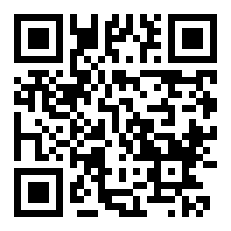Reviewer Guidelines
Introduction
This is a brief statement of requirements for all manuscripts that can be considered suitable for publication in the Nigerian Journal of Haematology. It is important that each of these points is considered a reviewer gives a final report.
This is only intended as a guide and is not exhaustive. As a reviewer, it is important to have a thorough understanding of the manuscript prior to making a recommendation. Such a Manuscript addresses a valid research questions.
Concerns and clarifications that can be addressed by a revision should be detailed in your report, which will be sent to the authors. More serious concerns should be directed to the editor in the confidential notes section of the form provided.
Any research integrity concerns should be addressed to editorial board.
Reviewers are expected to complete their reviews in a timely manner, this should not exceed 4 weeks from the time of accepting to review. Acceptance to review should not exceed 1 week. If a reviewer cannot meet the deadline, they should inform the journal promptly. Reviews should be thorough and constructive, providing specific feedback that helps authors improve their work. Point out strengths and weaknesses in the manuscript.
Confidentiality - Reviewers must maintain the confidentiality of the review process and not disclose any details of the manuscript to others.
Conflict of Interest - Reviewers should disclose any potential conflicts of interest that could affect their ability to provide an unbiased review. This may include financial interests, collaborations with the authors, or personal relationships.
Other guidelines include but not limited to the following;
1. Title - The title should be concise and provides a clear indication of the focus of the manuscript.
2. Abstract - Is self-contained, citation-free, and not exceeding 250 words. The abstract is structured to reflect the summary of the aims, methods, findings/results and conclusions. The abstract can be read and understood on its own, separately from the full text of the manuscript.
3. Introduction - This provides a clear summary of the current knowledge of the topic and clearly defines the aim of the study.
4. Content of the manuscript
- Clarity and organization - Reviewers should evaluate the clarity of the writing and organization of the manuscript. Ensure that the paper is comprehensive to the intended audience.
- Scope and originality - Reviewers should assess and ensure the scope fits the journal, evaluate the originality and significance of the research, and ensure the study adds new knowledge to the field.
4. Main text
- The main ideas or findings of the manuscript are clearly presented.
- The study design and approach has been sufficiently described and appropriately addresses the research question. Ensure that the methods are appropriate and well-described. Check for any ethical concerns. Asses statistical analysis which is clearly defined and appropriate
- The authors have included all essential information required to support the findings presented in the manuscript.
- The research conducted is ethical, particularly considering research on animals and humans.
5. Tables and Figures
- All figures and tables are clear and accurately represent the results.
- All tables and figures are cited consecutively in the text.
- All figures and tables have a descriptive title, clearly explaining what is presented
6. References
- All key references are included and conform to the Vancouver style of referencing, with no clear omissions of essential references that are required to support statements in the manuscript.
- There are no inappropriate citations, for example, those that are not directly supporting a statement or claims, or any excessive citations to any researcher (author, editor, reviewer) or journal. The below lists show additional items that could be considered, depending on article type Research articles
- The research question is valid.
- The methods and study design are appropriate for answering the research question.
- The reporting of methods, including any equipment and materials, is sufficiently detailed so that the research can be reproduced.
- It is clear how samples were collected/how participants were recruited. Any potential biases are clearly presented and discussed.
- All experiments have appropriate controls.
- All statistical tests are used appropriately and correctly reported.
- The results are presented clearly and accurately.
- All conclusions are supported by the data presented and in context of existing knowledge.
- All significant limitations are clearly presented and discussed. Review articles.
- The review is a balanced and unbiased overview of current understanding and knowledge.
- All key references are included, with no clear omissions of essential references that are required to - support statements in the manuscript.
- A wide range of source literature is assessed, with no focus on any particular researcher (including the authors themselves).
- The interpretation and presentation of any results from existing publications are accurate and precise.
7. Case reports/case series - A case report should present no more than 2 individual cases, while a case series can be used to present more cases.
- The patient(s) clinical presentation and diagnosis are clearly presented.
- Any treatments are clearly detailed, and clinical outcomes are clearly described.
- The patient(s) are sufficiently anonymised and any potentially identifiable
- information provided is consistent with the consent statement provided.
- The conclusions are specific to the context of the case(s) presented and do not attempt to make more generalised conclusions for which an alternative study design would be required.
Recommendation - A clear recommendation regarding the manuscript's suitability for publication is stated; options include: accepted, minor revisions, major revisions, rejected. Justify your recommendation. Further comments should be addressed to the editor on the form provided.








